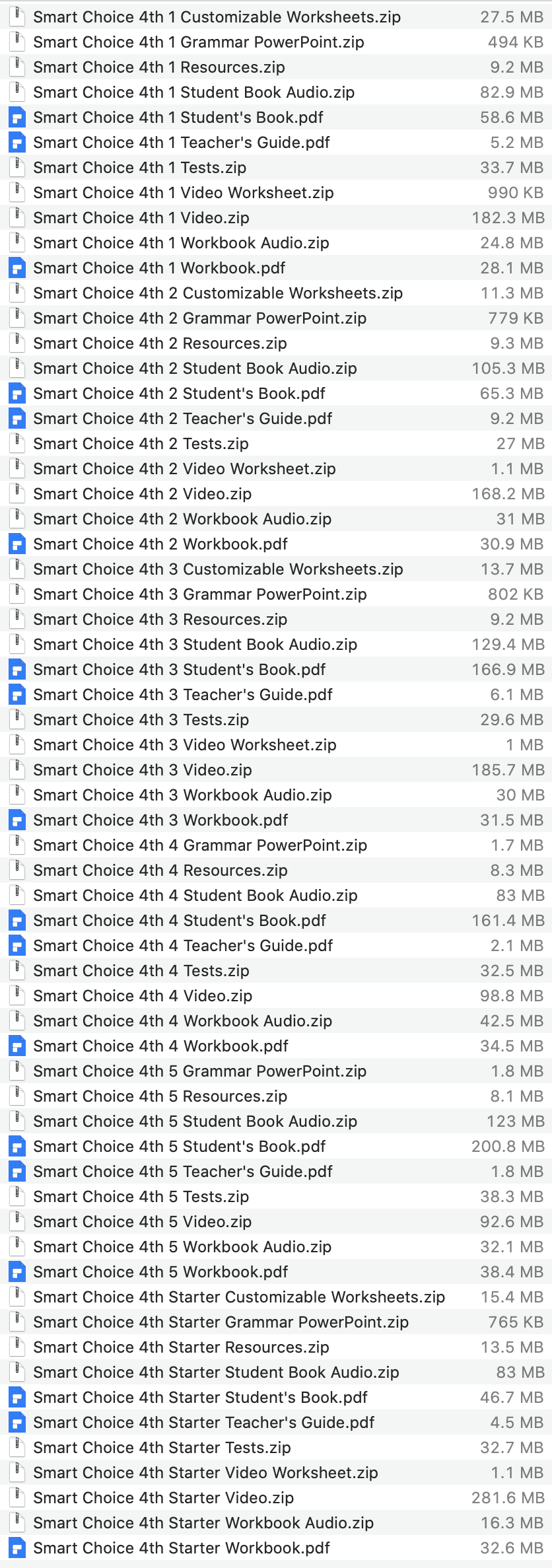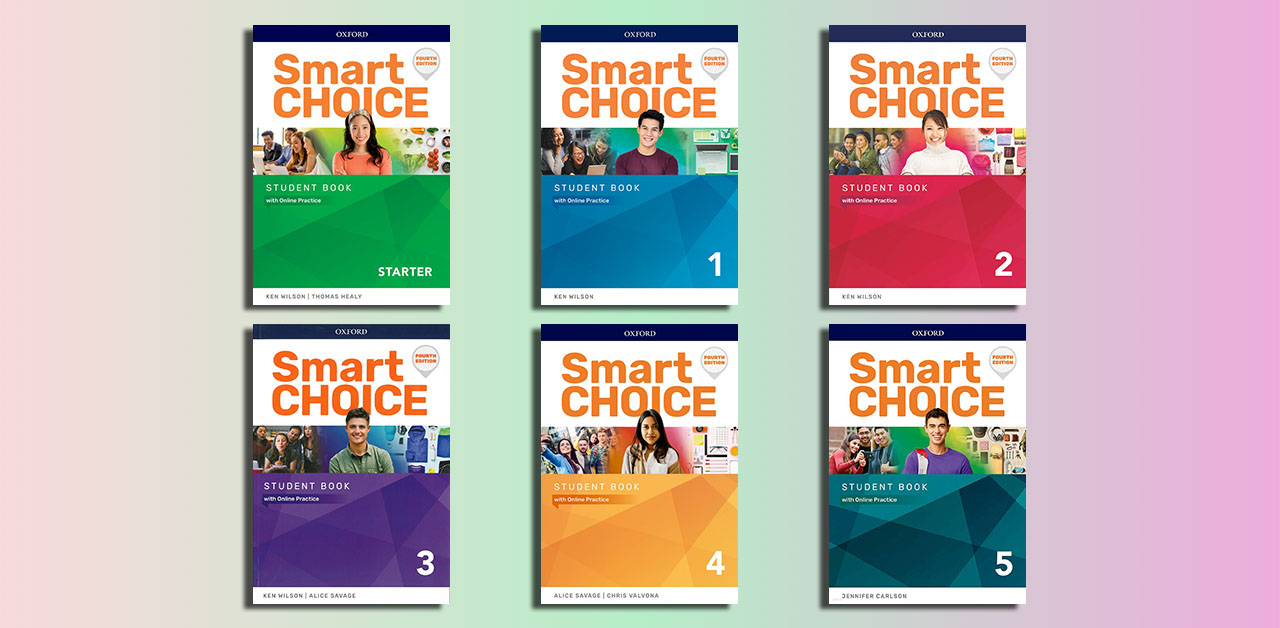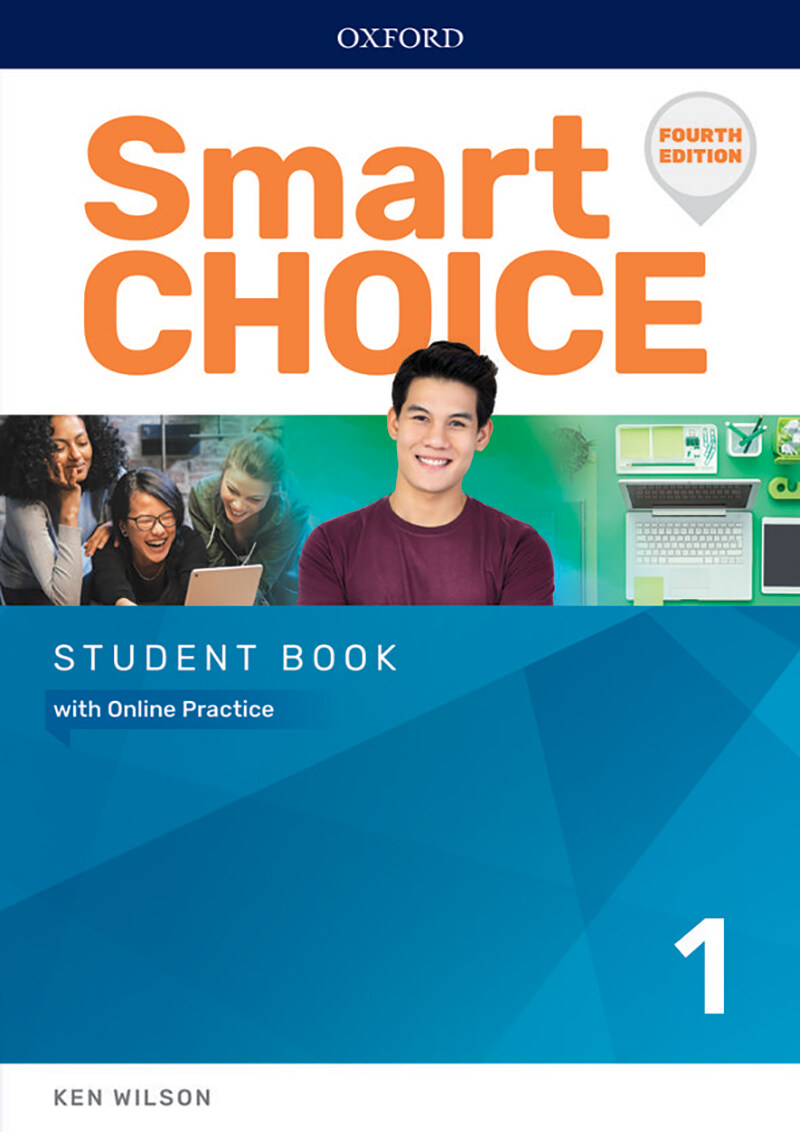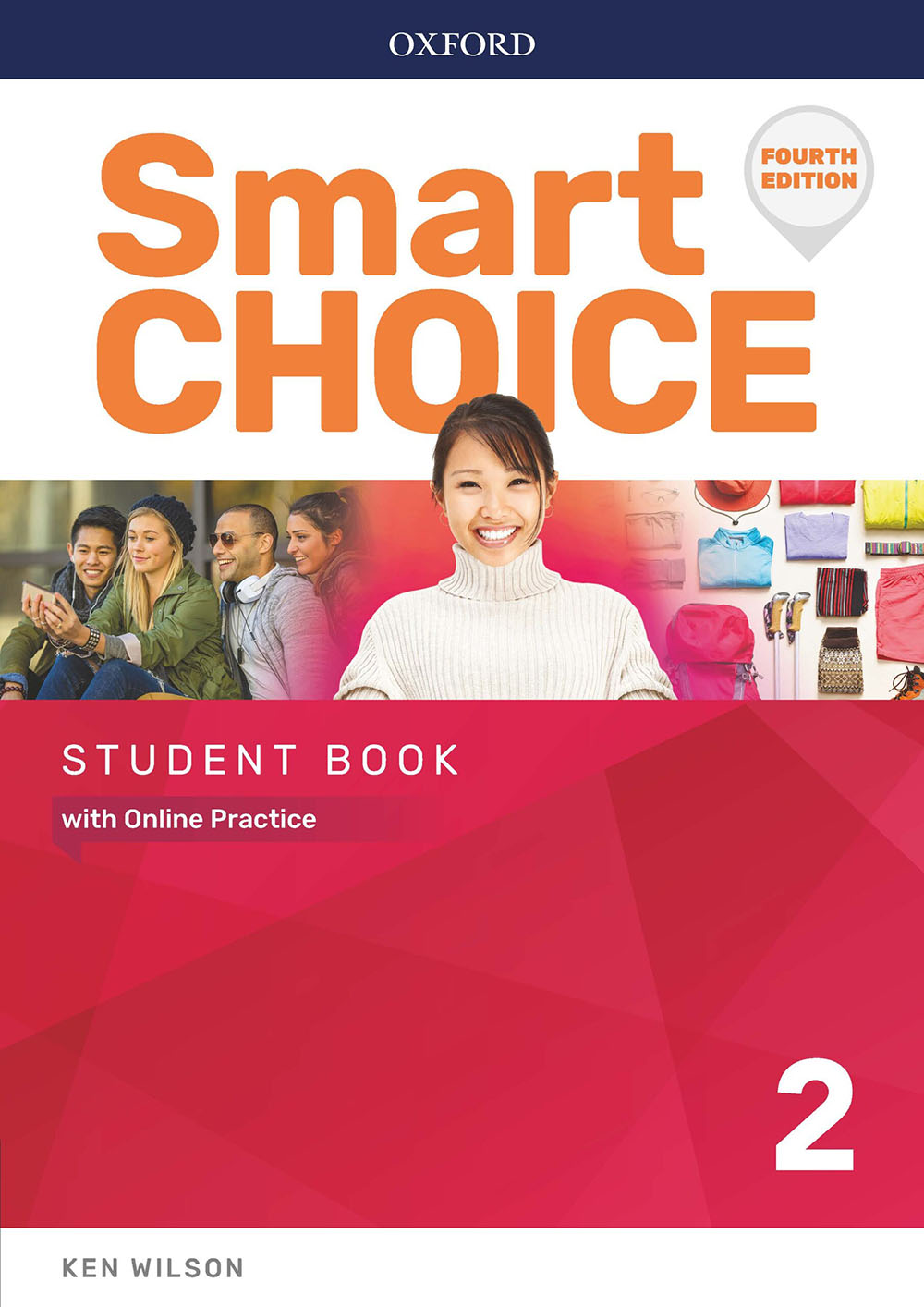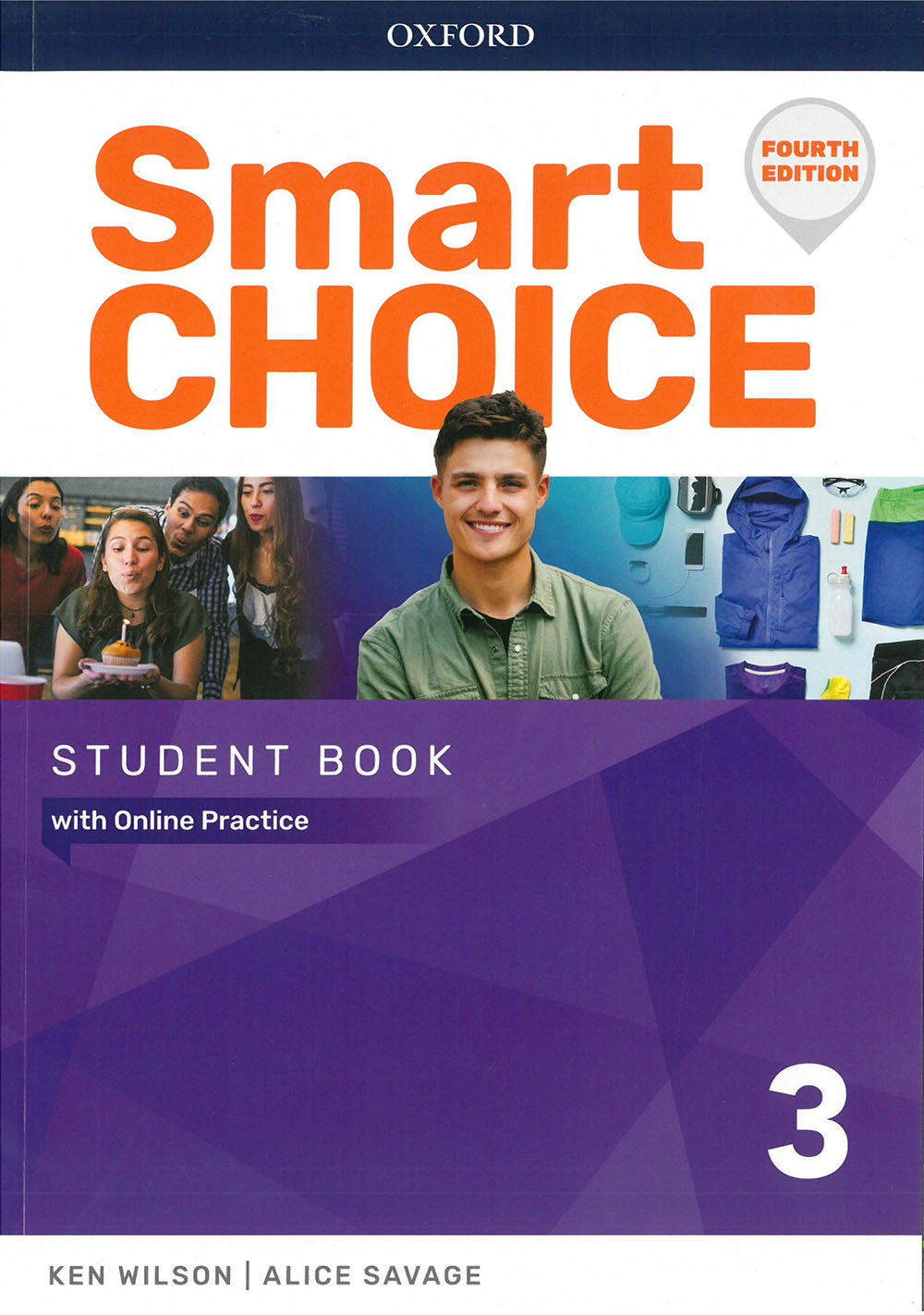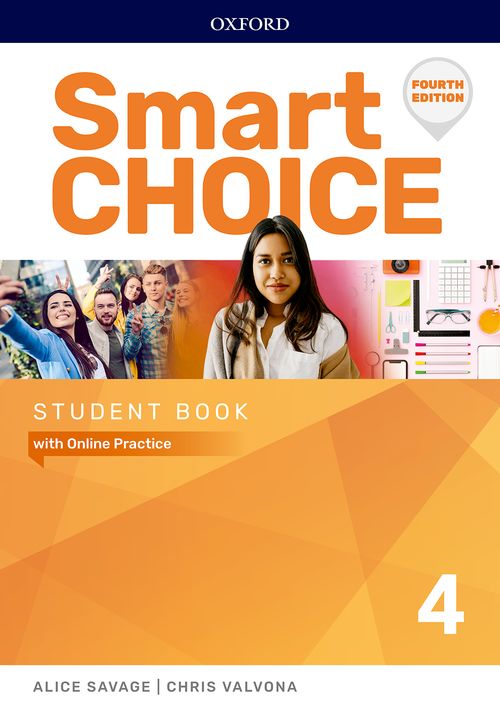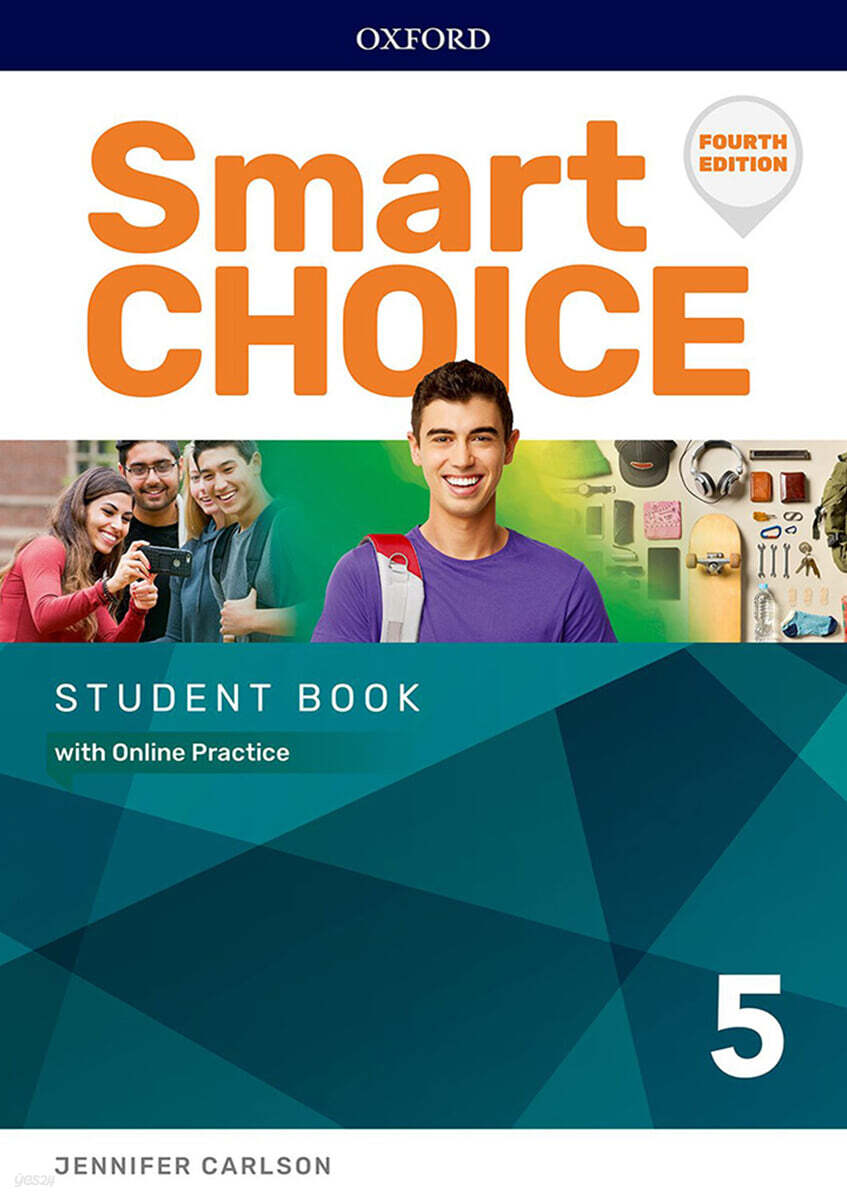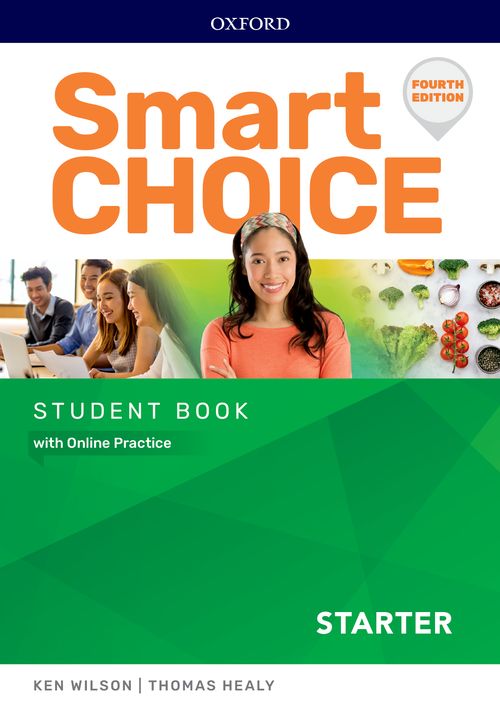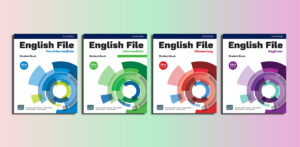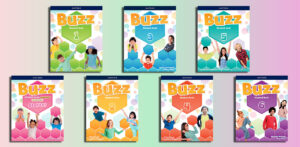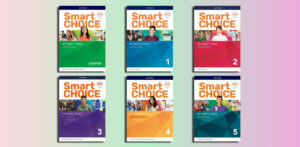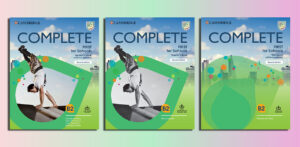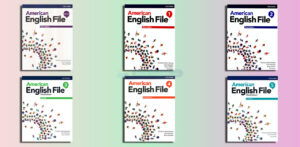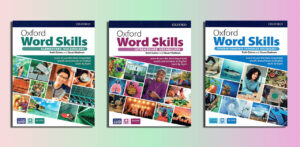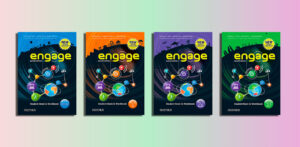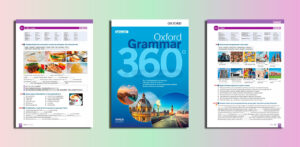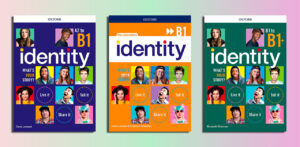Smart Choice 4th Edition (PDFs, Resources)
Level 1
Smart Choice 4th 1 Customizable Worksheets.zip
Smart Choice 4th 1 Grammar PowerPoint.zip
Smart Choice 4th 1 Resources.zip
Smart Choice 4th 1 Student Book Audio.zip
Smart Choice 4th 1 Student’s Book.pdf – Sample: Click
Smart Choice 4th 1 Teacher’s Guide.pdf
Smart Choice 4th 1 Tests.zip
Smart Choice 4th 1 Video Worksheet.zip
Smart Choice 4th 1 Video.zip
Smart Choice 4th 1 Workbook Audio.zip
Smart Choice 4th 1 Workbook.pdf – Sample: Click
Level 2
Smart Choice 4th 2 Customizable Worksheets.zip
Smart Choice 4th 2 Grammar PowerPoint.zip
Smart Choice 4th 2 Resources.zip
Smart Choice 4th 2 Student Book Audio.zip
Smart Choice 4th 2 Student’s Book.pdf – Sample: Click
Smart Choice 4th 2 Teacher’s Guide.pdf
Smart Choice 4th 2 Tests.zip
Smart Choice 4th 2 Video Worksheet.zip
Smart Choice 4th 2 Video.zip
Smart Choice 4th 2 Workbook Audio.zip
Smart Choice 4th 2 Workbook.pdf – Sample: Click
Level 3
Smart Choice 4th 3 Customizable Worksheets.zip
Smart Choice 4th 3 Grammar PowerPoint.zip
Smart Choice 4th 3 Resources.zip
Smart Choice 4th 3 Student Book Audio.zip
Smart Choice 4th 3 Student’s Book.pdf – Sample: Click
Smart Choice 4th 3 Teacher’s Guide.pdf
Smart Choice 4th 3 Tests.zip
Smart Choice 4th 3 Video Worksheet.zip
Smart Choice 4th 3 Video.zip
Smart Choice 4th 3 Workbook Audio.zip
Smart Choice 4th 3 Workbook.pdf – Sample: Click
Level 4
Smart Choice 4th 4 Grammar PowerPoint.zip
Smart Choice 4th 4 Resources.zip
Smart Choice 4th 4 Student Book Audio.zip
Smart Choice 4th 4 Student’s Book.pdf – Sample: Click
Smart Choice 4th 4 Teacher’s Guide.pdf
Smart Choice 4th 4 Tests.zip
Smart Choice 4th 4 Video.zip
Smart Choice 4th 4 Workbook Audio.zip
Smart Choice 4th 4 Workbook.pdf – Sample: Click
Level 5
Smart Choice 4th 5 Grammar PowerPoint.zip
Smart Choice 4th 5 Resources.zip
Smart Choice 4th 5 Student Book Audio.zip
Smart Choice 4th 5 Student’s Book.pdf – Sample: Click
Smart Choice 4th 5 Teacher’s Guide.pdf
Smart Choice 4th 5 Tests.zip
Smart Choice 4th 5 Video.zip
Smart Choice 4th 5 Workbook Audio.zip
Smart Choice 4th 5 Workbook.pdf – Sample: Click
Starter Level
Smart Choice 4th Starter Customizable Worksheets.zip
Smart Choice 4th Starter Grammar PowerPoint.zip
Smart Choice 4th Starter Resources.zip
Smart Choice 4th Starter Student Book Audio.zip
Smart Choice 4th Starter Student’s Book.pdf – Sample: Click
Smart Choice 4th Starter Teacher’s Guide.pdf
Smart Choice 4th Starter Tests.zip
Smart Choice 4th Starter Video Worksheet.zip
Smart Choice 4th Starter Video.zip
Smart Choice 4th Starter Workbook Audio.zip
Smart Choice 4th Starter Workbook.pdf – Sample: Click
✅ Get Smart Choice (PDFs, Resources): $8 / level; $38 / all 6 levels
๏ Other payment methods: Click here
Overview of the “Smart Choice 4th Edition” by Oxford
Contents
| ✅ Coursebook: | Smart Choice 4th Edition |
| ✅ Publisher: | Oxford University Press |
| ✅ Levels: | A1, A2, B1, B2, C1 |
| ✅ For: | Adult, Young Adults |
| ✅ English type: | American English |
| ✅ Publication year: | 2020 |
Smart Choice 4th Edition by Oxford University Press is a four-skills English language course designed for adult and young adult learners, focusing on improving communication skills through engaging and interactive content. Authored by Ken Wilson and others, it follows a “one page = one lesson” approach, making it flexible and easy for teachers to deliver focused lessons. The course is available in multiple levels, from beginner to advanced (CEFR A1–C1), with Levels 4 and 5 tailored for students progressing to higher proficiency.
Key Features:
- Speaking Focus: Dedicated speaking lessons include quizzes, surveys, and games to encourage real-world English use. New “Over To You” activities help students create their own dialogues, supported by structured models suitable for all levels.
- Multimedia Resources: Includes new conversation and documentary videos to explore real-life topics, with follow-up speaking activities in Bonus Units. The videos are level-appropriate and designed to build confidence.
- Online Practice: Smart Choice Online Practice is optimized for mobile use, allowing access to activities, audio, and video anytime, anywhere.
- Teacher Support: The Teacher Resource Center consolidates digital materials, including a Gradebook for tracking progress. The Classroom Presentation Tool enhances interactive, heads-up lessons.
- Group and Pair Work: Activities foster collaboration, with 95% of teachers in a 2019 impact study (conducted with 106 teachers) agreeing that the course boosts student engagement, participation, and interpersonal skills.
- Language Development: Structured activities and practice materials improve reading, listening, writing, and speaking proficiency. The course emphasizes practical conversation skills and real-world application.
Smart Choice 4th 1 Student’s Book
Who is suitable for “Smart Choice 4th Edition”?
Smart Choice 4th Edition by Oxford University Press is suitable for:
- Adult and Young Adult Learners: Designed for learners seeking to improve their English communication skills, particularly in speaking, listening, reading, and writing.
- English Language Learners (ELL): Appropriate for a wide range of proficiency levels, from beginner to advanced (CEFR A1–C1), with Levels 1–5 catering to different stages of language development.
- Classroom and Self-Study Students: Ideal for both guided classroom settings and independent learners, thanks to its structured “one page = one lesson” format and Online Practice platform optimized for mobile use.
- Learners Focused on Speaking: Best for students who want to build confidence in real-world conversation, as the course emphasizes speaking through quizzes, surveys, games, and “Over To You” dialogue activities.
- Teachers and Institutions: Suited for educators looking for flexible, engaging materials with strong digital support (e.g., Teacher Resource Center, Classroom Presentation Tool) and activities that promote group and pair work.
- Students Preparing for Practical English Use: Perfect for those aiming to apply English in everyday situations, with level-appropriate videos and activities that connect to real-life topics.
The course is especially effective for learners and teachers who value interactive, collaborative, and practical language learning, as evidenced by a 2019 impact study where 95% of teachers noted increased student engagement and interpersonal skills. It’s widely used in global ESL/EFL programs and is accessible for diverse classroom settings or self-paced study.
Smart Choice 4th 2 Student’s Book
The benefits of “Smart Choice 4th Edition”
The Smart Choice 4th Edition by Oxford University Press offers numerous benefits for adult and young adult English language learners, teachers, and educational institutions. Below is a concise overview of its key advantages:
Effective Speaking Development:
- Dedicated speaking lessons with quizzes, surveys, games, and “Over To You” activities encourage students to create their own dialogues, building confidence in real-world communication.
- Structured models ensure accessibility for all proficiency levels (CEFR A1–C1).
Engaging and Relevant Content:
- New conversation and documentary videos explore real-life topics, making learning relatable and motivating.
- Bonus Units with follow-up speaking activities enhance practical language application.
Flexible and Accessible Learning:
- The “one page = one lesson” format simplifies lesson planning and delivery, ideal for both classroom and self-study.
- Online Practice platform, optimized for mobile, allows anytime, anywhere access to activities, audio, and video.
Enhanced Student Engagement:
- A 2019 impact study (involving 106 teachers) found 95% agreed the course boosts student engagement, participation, and interpersonal skills through collaborative group and pair work.
Comprehensive Skill Development:
- Balanced focus on reading, listening, writing, and speaking ensures well-rounded language proficiency.
- Structured activities and practice materials support steady progress across all levels.
Robust Teacher Support:
- The Teacher Resource Center consolidates digital materials, including a Gradebook for tracking student progress.
- The Classroom Presentation Tool facilitates interactive, heads-up lessons, enhancing classroom dynamics.
Adaptable for Diverse Settings:
- Suitable for varied classroom environments and learner needs, with split editions (Student Book + Workbook) and e-books for flexibility.
- Widely used globally, with availability through retailers like Amazon and ELT Books.
Practical and Real-World Focus:
- Emphasis on conversation skills and real-life application prepares learners for everyday English use, making it highly practical.
- These benefits make Smart Choice 4th Edition an effective, engaging, and versatile choice for learners aiming to improve their English and for teachers seeking reliable, interactive resources.
Smart Choice 4th 3 Student’s Book
Effective learning strategies for “Smart Choice 4th Edition”
To maximize the benefits of Smart Choice 4th Edition by Oxford University Press, learners and teachers can adopt the following effective learning strategies tailored to its structure, content, and resources. These strategies align with the course’s focus on speaking, interactive learning, and real-world application for adult and young adult English language learners (CEFR A1–C1).
For Learners:
Leverage the “One Page = One Lesson” Structure:
- Focus on completing one lesson per study session to maintain a manageable pace. Review the lesson’s objectives (e.g., vocabulary, grammar, or speaking goals) before starting to stay goal-oriented.
- Revisit the lesson’s key points (e.g., phrases or grammar) at the end of each session to reinforce retention.
Prioritize Speaking Practice:
- Actively participate in the “Over To You” activities and speaking tasks (quizzes, surveys, games). Practice dialogues aloud, even when studying alone, to build fluency and confidence.
- Record yourself speaking responses to compare with the provided audio or video models, focusing on pronunciation and intonation.
Engage with Multimedia Resources:
- Watch the conversation and documentary videos in the Bonus Units multiple times—first for comprehension, then for specific language patterns (e.g., vocabulary or expressions).
- Use the Online Practice platform on mobile devices to review videos and audio during short, daily sessions (e.g., 10–15 minutes) for consistent exposure.
Collaborate in Pair and Group Work:
- If studying in a classroom, fully engage in pair and group activities, as these are designed to enhance interpersonal skills and mimic real-world communication (95% of teachers in a 2019 study noted improved collaboration).
- For self-study, simulate pair work by practicing with a language partner, tutor, or online language exchange platforms.
Use Active Vocabulary Building:
- Create flashcards or use apps to practice new vocabulary introduced in each lesson. Incorporate these words into your own sentences during speaking or writing tasks.
- Revisit the workbook exercises to reinforce vocabulary and grammar in context.
Set Realistic Goals:
- Align your study with the course’s level-specific objectives (e.g., A1 for basic communication, C1 for advanced fluency). Set small, achievable goals, like mastering five new expressions per lesson.
- Track progress using the Online Practice Gradebook (if available) to identify strengths and areas for improvement.
Apply Language to Real-Life Scenarios:
- Use the real-world topics from videos and activities to practice English outside the course. For example, discuss a documentary topic with a friend or write a short journal entry about it.
- Integrate learned phrases into daily conversations, emails, or social media posts to make learning practical.
Smart Choice 4th 4 Student’s Book
For Teachers:
Maximize the Classroom Presentation Tool:
- Use the interactive Classroom Presentation Tool to create engaging, heads-up lessons. Display videos or activities on a screen to encourage class discussions and immediate feedback.
- Highlight key lesson components (e.g., grammar points or speaking tasks) visually to keep students focused.
Encourage Collaborative Learning:
- Organize pair and group activities as outlined in the course to foster peer interaction, which 95% of teachers in the 2019 impact study found effective for engagement and interpersonal skills.
- Rotate pairs or groups regularly to expose students to diverse speaking styles and build confidence.
Incorporate Multimedia Strategically:
- Use the conversation and documentary videos as lesson starters to spark interest. Pause videos to ask comprehension questions or prompt students to predict outcomes, enhancing listening skills.
- Assign follow-up speaking tasks from Bonus Units as homework to reinforce video content.
Differentiate Instruction:
- Adapt activities for mixed-ability classes by assigning simpler tasks (e.g., basic dialogues) to lower-level learners and more complex ones (e.g., creating extended conversations) to advanced students.
- Use the Teacher Resource Center to access additional materials for struggling learners or to challenge high performers.
Monitor and Provide Feedback:
- Use the Gradebook in the Teacher Resource Center to track student progress and identify areas needing reinforcement. Share specific feedback with students to guide improvement.
- During speaking activities, listen for common errors (e.g., pronunciation or grammar) and address them in follow-up mini-lessons.
Integrate Online Practice:
- Assign Online Practice activities as homework to extend learning outside the classroom. Encourage students to use mobile access for short, frequent practice sessions.
- Review Online Practice results to tailor in-class reviews to common challenges.
Create a Supportive Environment:
- Foster a low-pressure classroom where students feel comfortable practicing speaking, as the course emphasizes confidence-building.
- Celebrate small successes (e.g., completing a dialogue or using a new phrase correctly) to maintain motivation.
General Tips:
- Consistency is Key: Study or teach regularly (e.g., 3–4 lessons per week) to maintain momentum, as the course’s structured design supports steady progress.
- Combine Resources: Use the Student Book, Workbook, and Online Practice together for a holistic approach, ensuring all skills (reading, listening, writing, speaking) are covered.
- Reflect and Adjust: Periodically assess progress (e.g., every 4–6 weeks) using course quizzes or self-evaluations to adjust strategies as needed.
By leveraging the course’s interactive tools, speaking focus, and digital resources, learners and teachers can create an engaging and effective learning experience.
Smart Choice 4th 5 Student’s Book
Effective teaching strategies for “Smart Choice 4th Edition”
Smart Choice 4th Edition by Oxford University Press is designed to enhance English language skills for adult and young adult learners (CEFR A1–C1) with a focus on speaking, collaboration, and practical application. Below are effective teaching strategies tailored to its structure and resources, optimized for classroom engagement and student success, based on its “one page = one lesson” format, multimedia components, and teacher support tools.
1. Utilize the “One Page = One Lesson” Structure
- Streamline Lesson Planning: Each lesson is contained on a single page, making preparation straightforward. Preview the lesson’s objectives (e.g., grammar, vocabulary, or speaking focus) and align activities to meet these goals within a single session (e.g., 45–60 minutes).
- Clear Lesson Flow: Start with a warm-up tied to the lesson’s theme, deliver the core content (e.g., grammar or vocabulary), and end with a speaking or review activity. This structure ensures students stay focused and achieve clear outcomes.
- Actionable Tip: Use the lesson’s key points as a checklist to ensure all components (e.g., listening, speaking, grammar) are covered before moving to the next lesson.
2. Maximize the Classroom Presentation Tool
- Interactive Delivery: Use the Classroom Presentation Tool to project lessons, videos, and activities, creating “heads-up” lessons that keep students engaged. Highlight key elements (e.g., new phrases or grammar rules) visually to reinforce understanding.
- Dynamic Activities: Incorporate interactive features like drag-and-drop exercises or polls during lessons to maintain attention and encourage participation.
- Actionable Tip: Display a video or activity from the tool as a lesson starter, pausing to ask predictive or comprehension questions to spark discussion.
3. Foster Collaborative Learning
- Leverage Pair and Group Work: The course emphasizes collaborative activities, with 95% of teachers in a 2019 impact study (106 teachers) reporting improved student engagement and interpersonal skills. Assign pair and group tasks (e.g., dialogues, surveys) to mimic real-world communication.
- Rotate Groups: Regularly change pair or group compositions to expose students to diverse language styles and build confidence in varied social dynamics.
- Actionable Tip: Use the “Over To You” speaking activities to encourage students to create their own dialogues, providing structured prompts for lower levels and open-ended tasks for advanced learners.
4. Integrate Multimedia Effectively
- Use Videos as Anchors: The course’s conversation and documentary videos in Bonus Units cover real-life topics. Introduce lessons with these videos to contextualize language and spark interest. Pause mid-video to check comprehension or prompt discussions.
- Follow-Up Speaking Tasks: Assign Bonus Unit speaking activities post-video to reinforce vocabulary and expressions. For example, ask students to role-play a scenario from the video or discuss its theme.
- Actionable Tip: For lower-level learners, provide subtitles during the first viewing, then remove them for subsequent viewings to build listening skills.
5. Differentiate Instruction for Mixed Abilities
- Tailor Activities: Adapt tasks to suit varied proficiency levels in the same classroom. For beginners (A1–A2), focus on simpler dialogues and vocabulary repetition; for advanced learners (B2–C1), extend tasks with creative writing or complex discussions.
- Scaffold Support: Use the Teacher Resource Center to access supplementary materials for struggling students (e.g., extra grammar exercises) or enrichment activities for stronger learners (e.g., advanced speaking prompts).
- Actionable Tip: During group work, pair higher-level students with lower-level ones to encourage peer teaching, ensuring tasks remain challenging yet achievable.
Smart Choice 4th Starter Student’s Book
6. Monitor Progress with Digital Tools
- Use the Gradebook: The Teacher Resource Center’s Gradebook tracks student performance on Online Practice activities. Regularly review results to identify common errors or areas needing review (e.g., specific grammar points or pronunciation).
- Provide Targeted Feedback: Share specific, constructive feedback based on Gradebook data or in-class observations, focusing on one skill (e.g., fluency or accuracy) per session to avoid overwhelming students.
- Actionable Tip: Set aside 5–10 minutes every few weeks to discuss progress with individual students, using Gradebook insights to guide the conversation.
7. Encourage Active Use of Online Practice
- Assign Homework Strategically: Use the Online Practice platform to assign activities (e.g., listening exercises, quizzes) that reinforce classroom lessons. Encourage mobile access for short, daily practice (10–15 minutes) to build consistency.
- Blend In-Class and Online Learning: Review Online Practice results in class to address common challenges, such as vocabulary gaps or listening comprehension issues.
- Actionable Tip: Gamify homework by setting class-wide goals (e.g., completing 80% of Online Practice tasks) with small rewards like extra speaking time or a fun activity.
8. Build a Supportive Classroom Environment
- Foster Confidence in Speaking: Create a low-pressure atmosphere where mistakes are part of learning, as the course emphasizes speaking fluency. Encourage all students to participate in speaking tasks, praising effort over perfection.
- Celebrate Progress: Acknowledge small achievements, like completing a dialogue or using a new phrase correctly, to maintain motivation across all levels.
- Actionable Tip: Start lessons with a quick “success share” where students describe a recent language win (e.g., using English outside class), reinforcing a positive mindset.
9. Connect Lessons to Real-World Application
- Relate to Everyday Scenarios: Use the course’s real-world topics (from videos and activities) to connect lessons to students’ lives. For example, after a lesson on travel, ask students to plan a trip using English.
- Encourage Practical Use: Assign tasks like writing emails or social media posts using lesson vocabulary, or practicing dialogues for real-life situations (e.g., ordering food, job interviews).
- Actionable Tip: Create a weekly “English in Action” challenge where students apply a lesson’s language in a real-world context and report back.
10. Reflect and Adapt Teaching Methods
- Assess and Adjust: Use the course’s quizzes or end-of-unit reviews to gauge student progress every 4–6 weeks. Adjust pacing or focus (e.g., more speaking practice) based on results.
- Gather Student Feedback: Periodically ask students what activities they find most helpful or challenging to tailor lessons to their needs.
- Actionable Tip: Keep a teaching journal to note which strategies work best for each class, refining your approach over time.
General Tips:
- Balance Skills: Ensure each lesson covers reading, listening, writing, and speaking, as the course is designed to develop all four skills holistically.
- Stay Consistent: Follow the course’s progression (e.g., 3–4 lessons per week) to maintain momentum and align with its structured design.
- Leverage All Resources: Combine the Student Book, Workbook, Online Practice, and Teacher Resource Center for a comprehensive approach, ensuring no component is underutilized.
These strategies align with Smart Choice 4th Edition’s emphasis on engagement, collaboration, and practical language use, helping teachers deliver effective, student-centered lessons.

